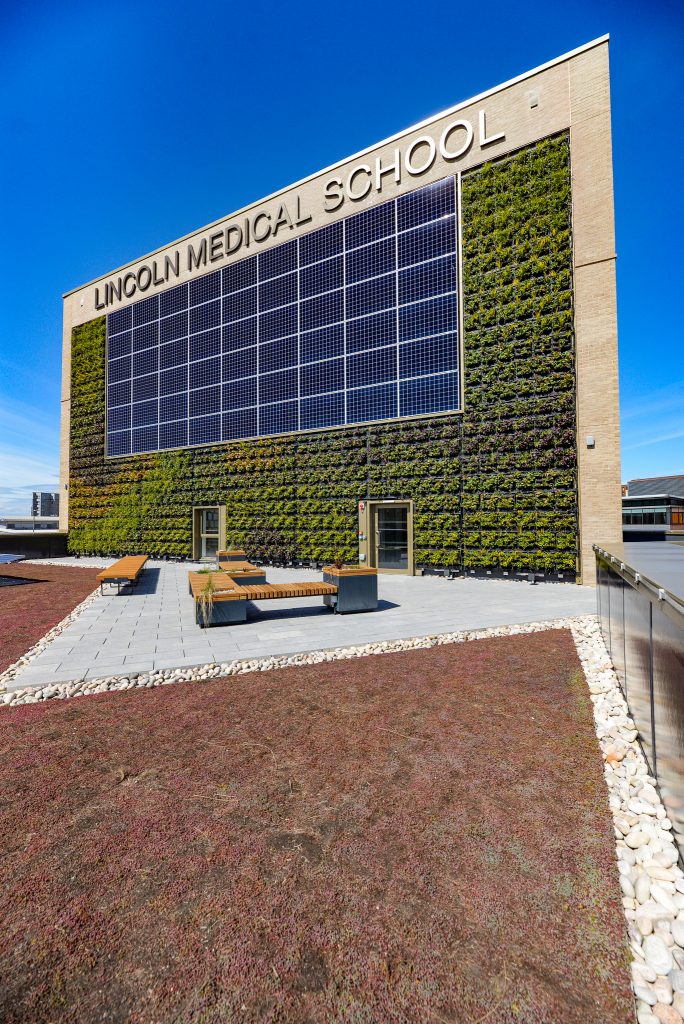August 6, 2021, by School of Medicine
50 at 50: Lincoln Medical School
 Although the 50 at 50 blog is part of the 50:30 celebrations at the Nottingham Medical School, it could really be called 30/50/1. 2020 marked 30 years of nursing/ 50 years of the Nottingham Medical School/ and 1 year of the Lincoln Medical School (LMS), which is a partnership with the University of Lincoln. 2019 marked the opening of LMS for students but April 2021 is when the dedicated £21 million Medical School building opened in Lincoln, marking a key milestone in the life of both institutions.
Although the 50 at 50 blog is part of the 50:30 celebrations at the Nottingham Medical School, it could really be called 30/50/1. 2020 marked 30 years of nursing/ 50 years of the Nottingham Medical School/ and 1 year of the Lincoln Medical School (LMS), which is a partnership with the University of Lincoln. 2019 marked the opening of LMS for students but April 2021 is when the dedicated £21 million Medical School building opened in Lincoln, marking a key milestone in the life of both institutions.
We are all absolutely delighted with our new home at the University of Lincoln’s stunning Brayford Pool Campus.
Our future generation of doctors can now benefit from purpose-built lecture theatres, laboratories, clinical and prosection anatomy suites equipped with cutting-edge diagnostic tools, and a dedicated science library.
Completion of this flagship building during the pandemic has been a remarkable achievement and all those involved in the planning, design, building and vision deserve congratulation. A time lapse video of the build can be seen here Lincoln Medical School Timelapse | University of Lincoln – YouTube
Our facilities include a clinical skills suite with mock consultation rooms (simulating hospital wards or a GP surgery) with the latest technologies to provide high-quality teaching, while a number of breakout spaces offer opportunities for quiet study or to socialise with peers.
The Bio-Medical and Health Sciences Library brings together collections covering Medicine, Life Sciences, Pharmacy, Chemistry, Nursing, and Allied Health and Social Care. Dedicated staff will be available to support students and staff.
As part of the collaborative approach to teaching offered by LMS, our students are able to access the combined information resources (e-books, books, journals and databases) provided by both universities.
The building is the most environmentally friendly here at the Brayford Pool campus and features photovoltaic panels on the roof and walls to provide zero carbon electricity, a host of efficient hybrid heating and ventilation systems, as well as a living ‘green’ wall on the five-storey building.
The wall of plants is grown vertically using hydroponics and not only increases biodiversity but also reduces air pollution. There are 15 different species planted in the LMS living wall, including Bergenia corifolia, Carex ‘Silver Sceptre’, and Hedera helix ‘Wonder’.
The area around the building has also undergone landscaping work and has been seeded with wildflower mixes to benefit local pollinators, while creating an attractive outdoor space to take a break.
An official opening of the building is being planned for later this year, subject to the latest Government guidance at the time.
As the second largest county in England with a rural and ageing population, Lincolnshire has traditionally struggled to recruit and retain doctors and other healthcare professionals. The shortage of doctors in the past year at the county’s hospitals and GP surgeries has been described as critical by health bosses, especially during winter months. It is hoped LMS will address future projected shortages of doctors by offering first-class training that will encourage graduates to complete their junior doctor training locally and apply for jobs in the region.
The Lincoln Medical School will have a major positive impact on the health and wellbeing of the people of Lincolnshire. We currently train almost 200 students, and this figure will rise to approximately 440 over the next three years.
Creating a medical school for Lincolnshire has been an aspiration for many years and we are now realising that goal. It’s something the whole community can be proud of, and which will serve the people of Lincolnshire for generations to come.
By Professor Danny McLaughlin, Associate Dean of Medicine at Lincoln Medical School
Photographs ©Shradha Mishra
Note: The project has been part-funded by the Greater Lincolnshire Local Enterprise Partnership.
No comments yet, fill out a comment to be the first


Leave a Reply